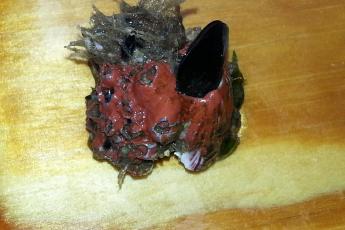Research ProjectManagement of Vessel Biofouling
Reducing the Risk of Marine Invasions Due to Vessel Fouling
Affiliated Labs
Project Goal
We study current and emerging technologies and management practices aimed at reducing biofouling on ships in order to develop risk assessments for various biofouling management scenarios.
Description



Publications
-
(2018). How will vessels be inspected to meet emerging biofouling regulations for the prevention of marine invasions?. Management of Biological Invasions, 9 (3) , 195-208. http://dx.doi.org/10.3391/mbi.2018.9.3.03
-
(2018). Evaluation of wetted surface area of commercial ships as biofouling habitat flux to the United States . Biological Invasions, 20 (8) , 1977-1990.http://dx.doi.org/10.1007/s10530-018-1672-9
Hughes, Kevin A. and Ashton, Gail V. 2017. Breaking the ice: the introduction of biofouling organisms to Antarctica on vessel hulls. Aquatic Conservation: Marine and Freshwater Ecosystems, 27 (1) , 158-164. http://dx.doi.org/10.1002/aqc.2625
Moser, Cameron S., Wier, Timothy P., Grant, Jonathan F., First, Matthew R., Tamburri, Mario N., Ruiz, Gregory M., Miller, A. Whitman and Drake, Lisa A. 2016. Quantifying the total wetted surface area of the world fleet: a first step in determining the potential extent of ships' biofouling. Biological Invasions, 18(1): 265-277. doi:10.1007/s10530-015-1007-z
Davidson, Ian C., Brown, Christopher W., Sytsma, Mark D. and Ruiz, Gregory M. 2009. The role of containerships as transfer mechanisms of marine biofouling species. Biofouling, 25(7): 645-655. doi:10.1080/08927010903046268
Feature Stories
Uncharted Waters: What Barnacles Can Teach us About Species Dispersal. By Emily Anderson and Monaca Noble. July, 14, 2016
Ships’ Marine Hitchhikers. By Ian Davidson. November 2012
Contact
Chela Zabin (zabinc@si.edu);
Ian Davidson (davidsoni@si.edu)


